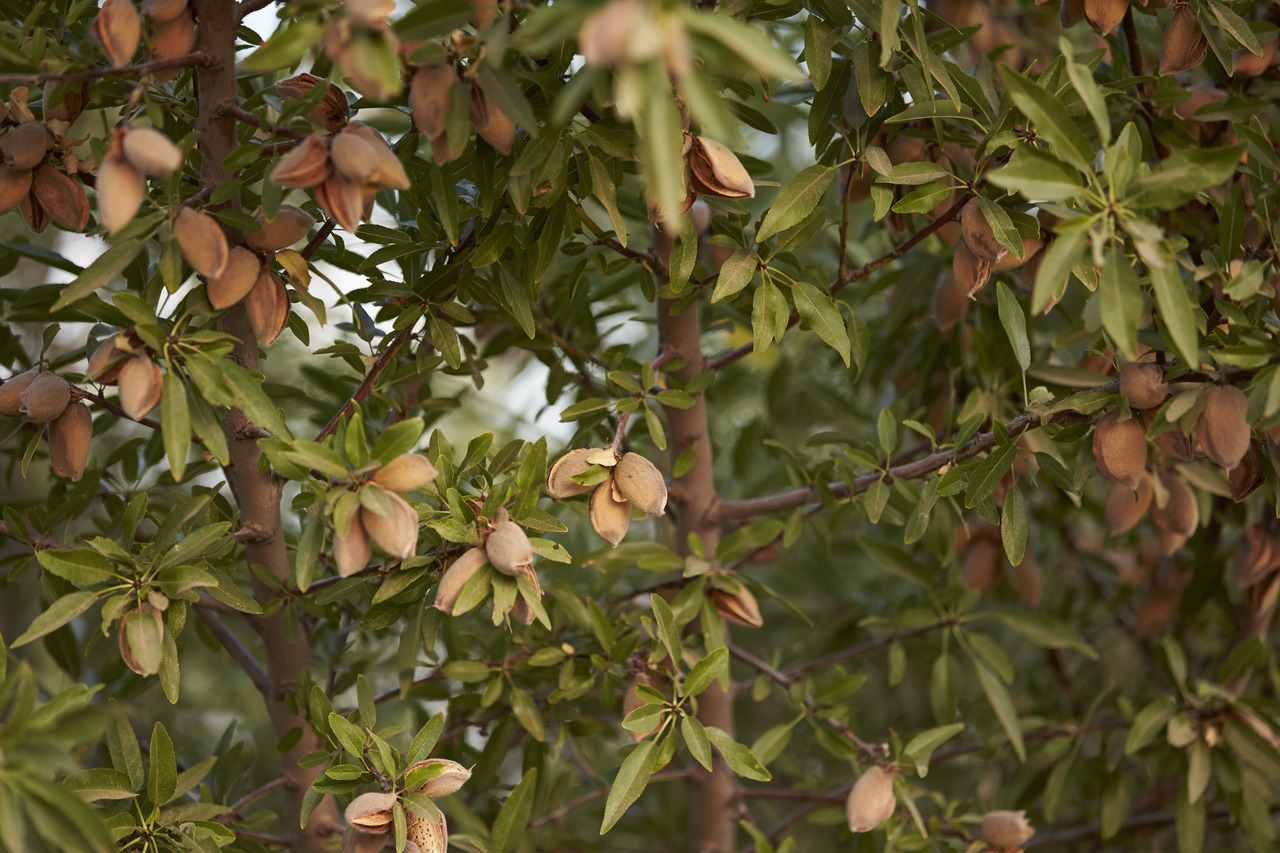This year’s California almond crop is forecasted to surpass 2 billion pounds for the first time since 2013, according to the California Almond Objective Measurement Report announced Wednesday by Almond Board of California (ABC).
Based on 900,000 bearing acres, the objective forecast for the 2016-2017 crop is 2.05 billion meat pounds. The ABC-funded forecast is administered by the United States Department of Agriculture (USDA) National Agricultural Statistics Service — California Field Office (NASS/CFO).
Following the Subjective Forecast each year, the Objective Report is the second and final forecast of almond production annually, providing information about the projected harvest size to help inform business decisions for the almond industry as well as the food industry at large.
Richard Waycott, ABC president and CEO, said this year’s almond crop growth amidst the drought reflects growers’ commitment to innovation and sustainable new technologies that reap the most production possible from every drop of water used, while simultaneously safeguarding precious natural resources. Since 1994, almond growers have reduced the amount of water it takes to grow a pound of almonds by 33 percent.1
“While growers have made significant advances, as an industry, we collectively recognize the need to take a leadership position on pressing issues facing both California’s citizens and its agricultural industry,” Waycott said. “That’s why we launched the strategic Accelerated Innovation Management program last year to prioritize more research on the most important sustainability issues from water efficiency and management to air quality, building upon 40 years of existing Almond Board-funded research.”
Some have incorrectly speculated crop growth over the years is due solely to almond acreage expansion on non-irrigated rangeland in California. However, new analysis of satellite imagery from the consulting group Land IQ shows that 96 percent of almond acreage planted over the last 10-15 years lies within the Central Valley’s historic irrigated area, often replacing other irrigated crops and older almond orchards.2
The data in the Objective Forecast is based on actual almond counts and measurements recorded by the USDA NASS Pacific Region Office in orchards throughout the state. Sampling usually starts in late May and follows the process below:
- Statistically random orchard blocks representing the population are used.
- Two trees per orchard are selected using a random number table and trunks and limbs are measured.
- Starting at the base of the tree, a random selection process tells the team which branch of the tree to start counting almonds. At each further fork in the branch, the random selection process continues, directing the team further up the tree, counting each almond on the branch as they go and picking every fifth nut. Once the team reaches the last part of the branch, called the terminal branch, the nuts on the terminal branch are picked and counted. A sample of both intermediate and terminal nuts are sent to a lab where the kernel weight, length, width, thickness and grade are measured.
Samples for the Objective Measurement are very specific, taking into account almond variety, location of orchard and age of the trees. The research model is ultimately designed to provide a forecast of all almond production in California. However, models do not forecast production by specific almond variety.
Chris Messer, Director, Pacific Region of NASS said the latest crop forecast is up 2.5 percent from the May 2016 subjective forecast of 2.0 billion pounds. The estimate is up 7.9 percent from the 2015–2016 crop production of 1.9 billion pounds.
The average nut set per tree is 6,159, up 4.9 percent from the 2015 almond crop. The Nonpareil average nut set is 5,583, up 6.6 percent from last year’s set. The average kernel weight for all varieties sampled was 1.48 grams, up 3.5 percent from the 2015 average weight of 1.43 grams.
“With its Mediterranean climate, infrastructure and innovative advancements in production techniques, California is the ideal place to grow almonds -- ensuring we can meet consumer demand for this heart-healthy, nutrient-rich food both in the U.S. and around the world,” said Waycott.3
1 University of California. UC Drought Management. Feb. 2010. Food and Agriculture Organization of the UN. FAO Irrigation and Drainage Paper 66 – Crop yield in response to water. 2012. Almond Board of California. Almond Almanac 1990-94, 2000-14.
2 Land IQ. Historic Irrigation Extent Analysis. Mar. 2016. Based on imagery from June 15th, 1993 through September15th, 1998 provided by the U.S. Geological Survey.
3 Scientific evidence suggests, but does not prove, that eating 1.5 ounces per day of most nuts, such as almonds, as part of a diet low in saturated fat and cholesterol may reduce the risk of heart disease. One serving of almonds (28g) has 13 grams of unsaturated fat and only 1 gram of saturated fat.


